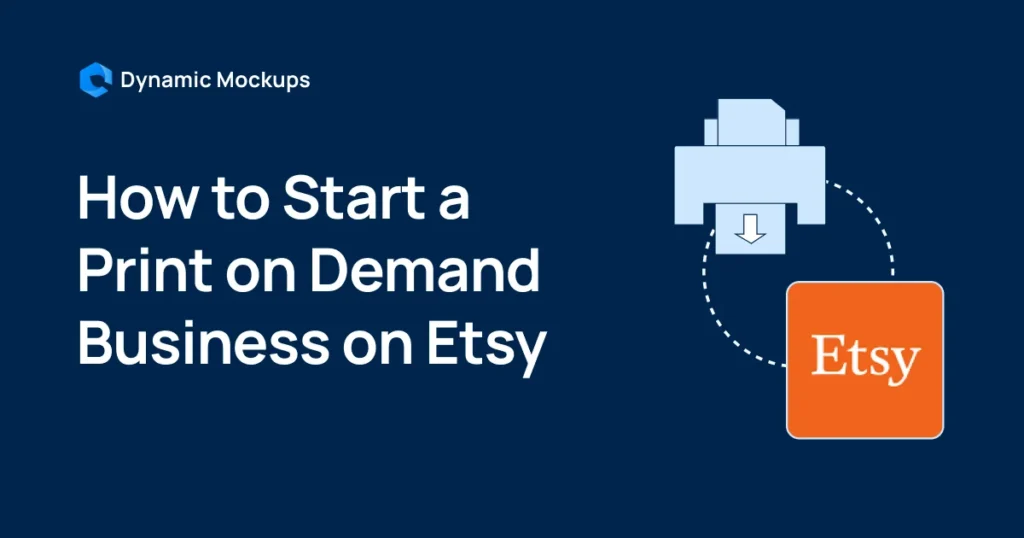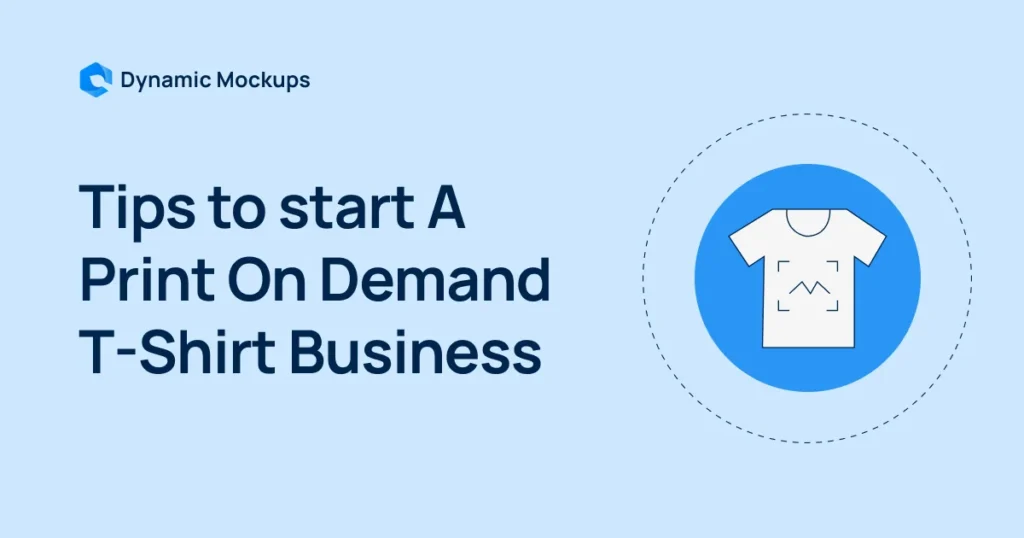Amazon is one of the biggest names in online retail and shopping services, with nearly $575 billion in net sales revenue worldwide in 2023.
Amazon is a great starting point for print-on-demand businesses to tap into this extensive market and grab lucrative opportunities.
You don’t know how to start? The process isn’t as complex as you might think with the right guide.
Let us show you how to start an Amazon print-on-demand business, step by step.
How to Start an Amazon Print-on-Demand Business in 8 Steps?
Depending on whether you use Amazon’s print-on-demand services or external ones, you can start selling on Amazon in two ways.
We’ll show you both options and the pros and cons of each.
But first things first.
Step 1: Choose a Selling Plan
Amazon offers 2 selling plans with tools and services. Regardless of your chosen plan, you can always switch or cancel your subscription.
The Individual Plan is a good option if you sell fewer than 40 items monthly, whereas the Professional Plan is for more advanced sellers.
Furthermore, the Individual Plan costs $0.99 per item sold, and the Professional one costs $39.99 monthly.
Another notable difference is in the tools and services you have available. Thus, with the Pro Plan, you can:
✅ Add multiple users to your account.
✅ Apply to sell restricted products.
✅ Build your brand with enhanced product pages, a digital store, and other tools if you enroll your brand in the Amazon Brand Registry.
✅ Compete to be the Featured Offer
✅ Create promotions and coupons
✅ Integrate selling apps with SP-API
✅ List products in bulk
✅ Manage inventory in bulk
✅ Set your shipping fees for non-media products
✅ Set dynamic prices and more.
📌 Note:
Amazon also collects a referral fee on each item you sell. For example, for Clothing and Accessories categories, the referral percentage fees are as follows:
- 5% for products with a total sales price of $15.00 or less
- 10% for products with a total sales price greater than $15.00 and less than or equal to $20.00
- 17% for products with a total sales price greater than $20.00.
You can check Amazon’s Referral Fees page for a more detailed description of other product categories.
2. Create a Seller Central Account
Once you’ve chosen your plan, you need to register and create a so-called Seller Central account.
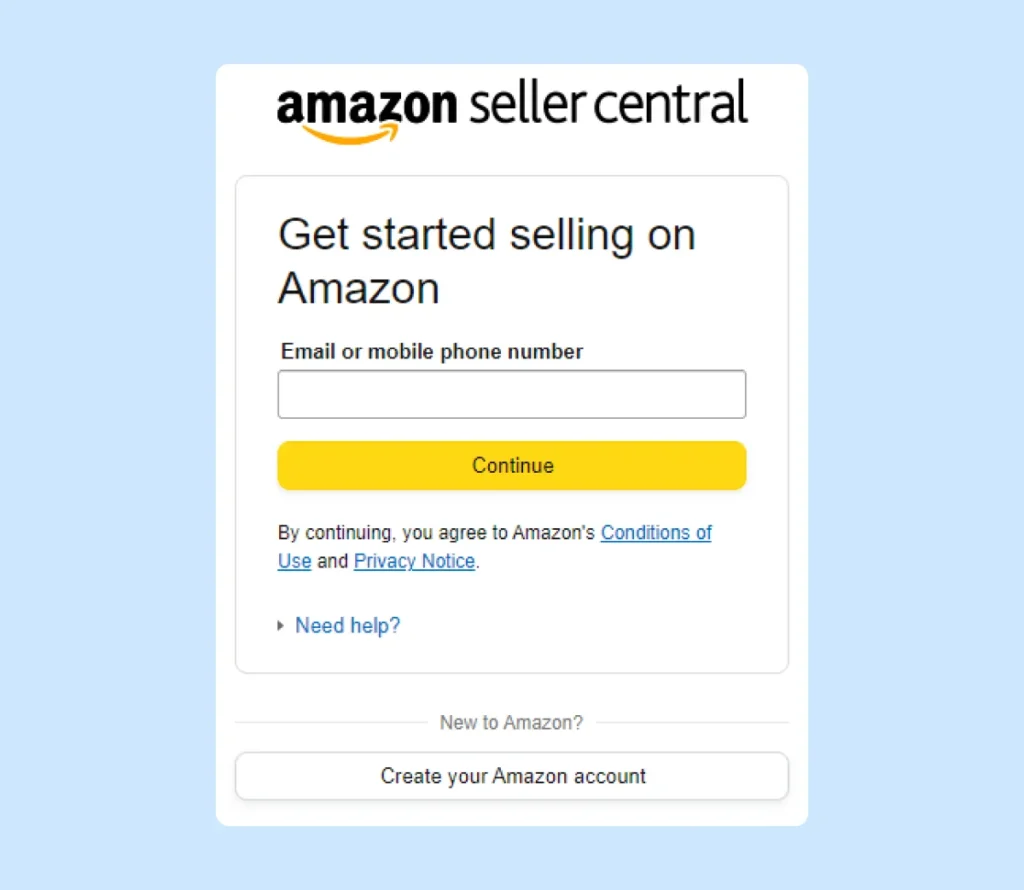
During registration, you’ll provide information about yourself and your business and details to set up payment, shipping and return settings, settlement processing, etc.
You can also use the FAQ section while registering if you need help with specific selections.
📌 Note:
Make sure to pick the correct classification as it determines subsequent entries. Furthermore, if you enter a business name, it has to be the name you used to register with your state or federal government.
In other words, it should be the exact name that appears on your business registration document.
3. Create Product Mockups
Mockups are the lifeblood of any print-on-demand business, being the first contact point between you and potential customers.
However, one of the biggest challenges in creating mockups is to make them look real and appealing to customers.
It is a tricky task since you need to “translate” the colors, the way the fabric looks, etc.
Remember that a poorly made mockup can make even the best design look bad, turning customers away.
That’s why it is essential to opt for high-quality mockup generators to ensure top-notch visuals.
Here are a few things you should factor in when choosing the right mockup generator for your needs.

💡 ProTip:
Dynamic Mockups offers an automated solution for creating mockups, allowing you to generate a large number of high-quality, customizable mockups at a fraction of the cost.
How? It enables you to create mockups and their variations in bulk and eliminates the traditional process of creating images manually.
This way, you can upload multiple designs and color combinations, and we will automatically create all mockup variations.
✨In order to create mockups, you can browse through our Forever Free Library and select mockups from the following categories:
✨ The other option is to bulk-create mockups from your custom Photoshop Templates and customize them further.
Combined with the API functionality, you can automate the creation of product mockups by simply placing your design and generating renders.
4. Choose a Print-On-Demand Provider
When you want to connect a POD provider on Amazon, you can use Amazon’s provider, Merch by Amazon, or external POD providers, such as Printify, Merchize, etc.
Let’s check the pros and cons of each option.
4.1. Merch by Amazon
Merch by Amazon is Amazon’s POD service that enables you to upload your designs while Amazon prints and delivers your merchandise.
In other words, Amazon takes care of production, shipping, and customer service with no upfront costs.
Pros:
✅ You can earn royalties on every product you sell.
✅ Prime members receive free two-day shipping.
✅ You can tap into the vast customer base and have better search visibility than opting for a 3rd party provider.
Cons:
🔴 A Tier system that initially limits the number of designs you can upload.
🔴 You’ll have to wait longer to get your Merch by Amazon account approved.
🔴 Fulfills orders generated through Amazon only.
4.2. 3rd Party POD Providers
3rd party POD providers can be a great alternative to Merch by Amazon since you don’t have to wait for approval.
Popular POD providers are:
- Printify — Works with printing companies in various countries.
- Printful — Known for a significant number of fulfillment centers worldwide and
- Merchize — Has an integration with Amazon and currently has manufacturing facilities in Vietnam, China, and the US.
Pros:
✅ Offer a broader range of products.
✅ More flexibility to set up your prices.
✅ No waiting time for approval.
Cons:
🔴 You have to set up integrations and other parameters.
🔴 Can have longer processing times.
🔴 You have to pay $39.99 to run an Amazon store as an individual seller.
5. List Your Products
Besides premium mockups, your product listing page should include compelling product titles and descriptions.
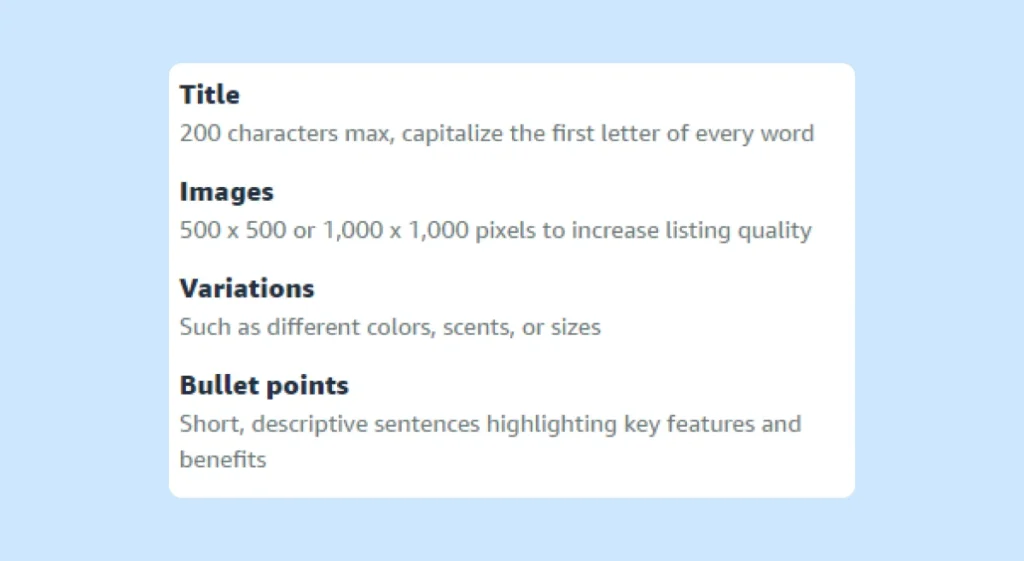
5.1. Titles and Descriptions
Although the title character limit for Amazon listings is 200 characters, Amazon recommends 80 or fewer for the best impact.
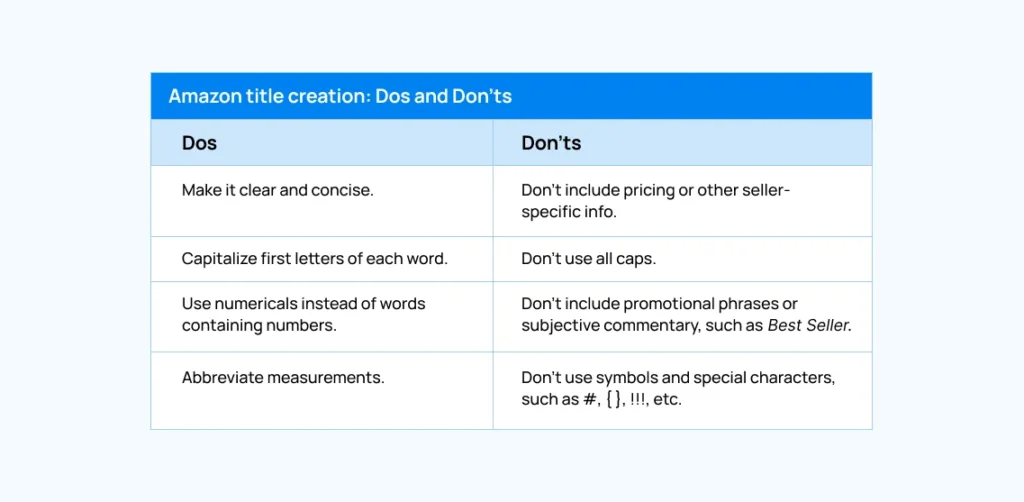
In addition, if you have variations of the product, include colors, size or other relative descriptive info.
When it comes to product descriptions, product description character limits differs from one product category to another, so be sure to review category-specific guidance.
Product descriptions can have up to 2000 characters and can include images.
Describe major features such as size and style, and illustrate how a customer can use the product, and what makes it special.
You should write full sentences and include dimensions, care instructions and warranty information.
5.2. Images and Mockups
You should have at least one main image, but also add other images to show the product in use from different angles or with different features.
- Furthermore, you should show the product against a white background, especially for the main image and the product should fill 85% or more of the frame
- The recommended size should be least 1,000 pixels, but 1600 pixels or more works even better for zooming in on a product.
- Regarding the file types, you can upload jpeg if possible but also TIFFor static GIFs.
5.3. Bullet Points
Bullet points provide additional info about the product and highlight its key features and benefits.
You should start with a 1-word description and then provide a short explanation in 100 characters or fewer.
Also, you don’t need to write full sentences. Actually, you can follow the same guidelines as for writing titles.
6. Set Prices
Pricing your products correctly on Amazon is crucial to maximizing sales, maintaining competitiveness, and ensuring profitability.
1. Research Competitor Pricing
- Start by researching similar products on Amazon to understand the price range. Look at both the Best Sellers and those with similar features or designs.
- Evaluate market trends and note any pricing patterns, such as seasonal discounts or promotional pricing, that competitors may frequently employ.
2. Understand Your Costs
- Factor in all costs associated with your product, including production, shipping, Amazon fees (like referral fees and FBA fees), and overhead costs. Understanding your total cost will help you set a price that protects your margin.
- Set a target profit margin by determining your desired profit margin and add this to your overall costs to establish a base price that ensures profitability.
In general, you should aim for a profit margin of around 20-30%.
3. Consider Value and Perceived Value
- Consider your product’s unique features and benefits.
If your POD product offers distinctive designs, quality, or customization options, you may justify a higher price.
- Use high-quality mockups, detailed descriptions, and reviews to boost the perception of your product. Strong perceived value can allow for higher pricing.

4. Leverage Pricing Strategies
- Set prices slightly below those of competitors to attract price-sensitive customers, especially if your product is similar.
- Consider using dynamic pricing tools that adjust your prices automatically based on competitor pricing, demand, and inventory levels.
5. Evaluate Shipping Options
- Incorporate shipping costs into your product price if possible, or consider utilizing Amazon’s FBA to make your product eligible for Prime shipping.
- On the other hand, if you choose not to include shipping, consider offering flat-rate shipping, making it easier for customers to understand the total cost.
6. Test Pricing with Promotions
- Experiment with introductory prices, limited-time promotions, or coupons to measure customers’ response and reactions.
- Track the performance of discounted products versus their original prices to determine the optimal price point.
7. Pick Your Fulfillment Method
You can fulfill orders in 2 ways:
1. Merchant-fulfilled shipping (MFN), which means that you manage your own inventory and ship products directly to customers.
2. Fulfillment by Amazon (FBA), which implies that you send inventory to Amazon which then takes care of picking, packing and delivering products.
It also deals with customer service and returns.
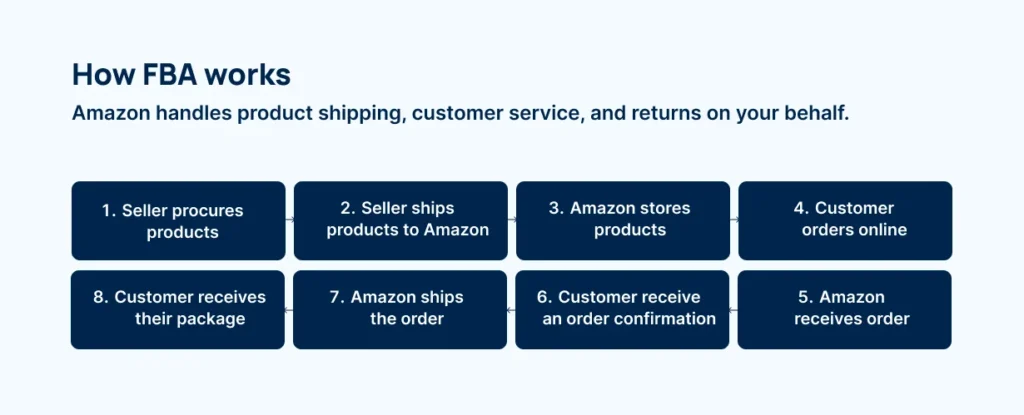
Both methods can be useful depending on your size, budget and growth, but here is a quick reference to help you determine the most optimal one for your business.

In addition, you can also use the Revenue Calculator by Amazon to get real-time cost comparison between different fulfillment options.
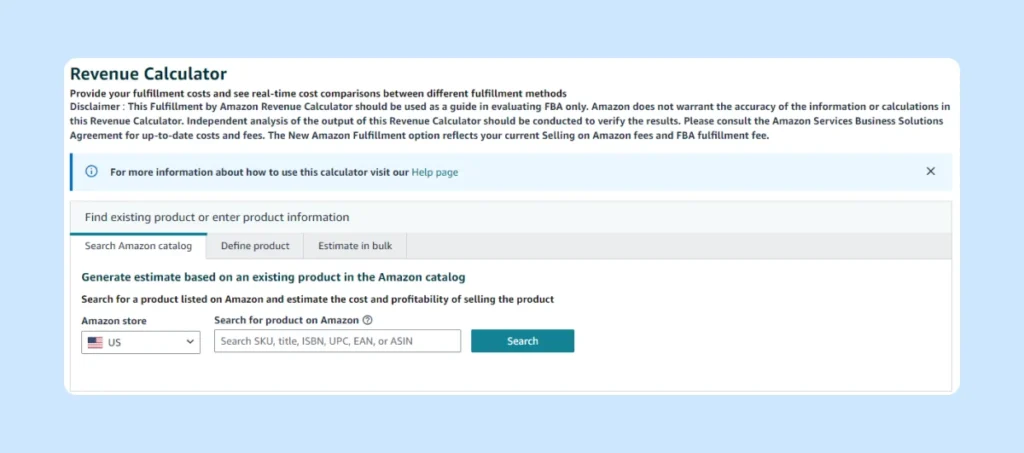
8. Promote Your Products
It goes without saying that even the best products are hard to sell if the audience and potential customers don’t know about them.
Selling on Amazon enables you to reach vast audience, but just listing your products and hope for the best isn’t enough.
Besides “regular” marketing efforts, spanning social media presence, email marketing, ad campaigns, etc., Amazon also has its advertising pay-per-click set of tools to boost your visibility.
Here are a few options you may want to explore further:
- Lighting Deals — Time-bound promotional offers that appear on the Amazon Deals page.
- Sponsored Products — Ads that feature a single product and appear in search results and on product pages.
- Coupons — Create coupons that show up on the Amazon Coupons page, in search results, and on product detail pages.
Wrapping It Up
As your POD business grows, Amazon can easily scale with you.
With a well-optimized Amazon store, you can add more products and reach more customers without worrying about the limitations of a smaller platform.
By strategically leveraging both internal and external tools and resources, along with its vast marketplace, Amazon can be a game-changer for your POD business.
But, before you can dive into Amazon, you must have professional mockups and visuals.
Dynamic Mockups not only lets you create mockups in bulk, but it also allows you to easily integrate with eCommerce platforms.
How Can Dynamic Mockups Help You Start Your Amazon Print-on-Demand Business?
Dynamic Mockups, an online mockup generator, enables you to create high-quality mockups in a matter of minutes.
Thanks to its automation features, you can quickly and seamlessly:
✨ Create 100 mockups variations with different colors, designs, patterns, etc., in about 10 seconds.
✨ Achieve more customization and flexibility by uploading custom Photoshop Templates.
✨ Browse our evergrowing Free Mockup Library with versatile products.
✨ Dynamically add realistic mockups to any section of your website and app via our API.
✨ Centralize all your designs and easily move them and rearrange them in the Design Library.
✨ Customize your designs with Photoshop blending modes, change colors with the color picker and integrated Printful and Printify color combinations.
✨ Place, reposition and resize your assets, do post adjustments, etc.
✨ Integrate with Etsy, WooComerce, and Make to connect your products to these platforms without uploading them manually.
And so much more.
Ready to check Dynamic Mockups in action?
Start with Dynamic Mockups for free and start creating scroll-stopping mockups.
Keep Learning:
15 Successful Print-on-Demand Business Examples

